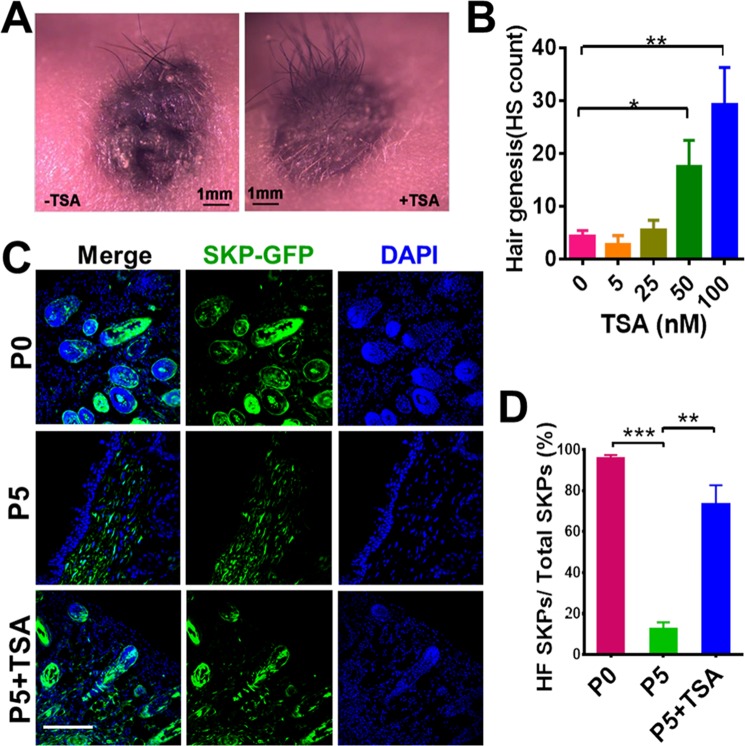Figure 4.
TSA improves the hair follicle-inductive capacity of culture expanded SKPs. (A,B) Hair genesis of SKPs treated with different concentration of TSA. SKPs in P5 were treated with different concentrations of TSA and implanted into excisional wounds in nude mice in combination with freshly isolated neonatal mouse epidermal cells. Twenty-one days post transplantation, hairs generated at the wound sites were photographed (A), and the number of hairs in each wound was counted (B, mean ± SEM; n = 5; *P < 0.05; ** P < 0.01). Scale bars: 1 mm. (C,D) Immunofluorescence staining of tissue sections of the wounds with DAPI and anti-GFP antibody showed that more neogenic hair follicles containing GFP-expressing SKPs were found in wounds receiving TSA-treated SKPs, compared to wounds receiving SKPs without TSA treatment (C). Error Bars represent means ± SEM; n = 5; **P < 0.01; ***P < 0.001. Scale bars: 100 μm.

